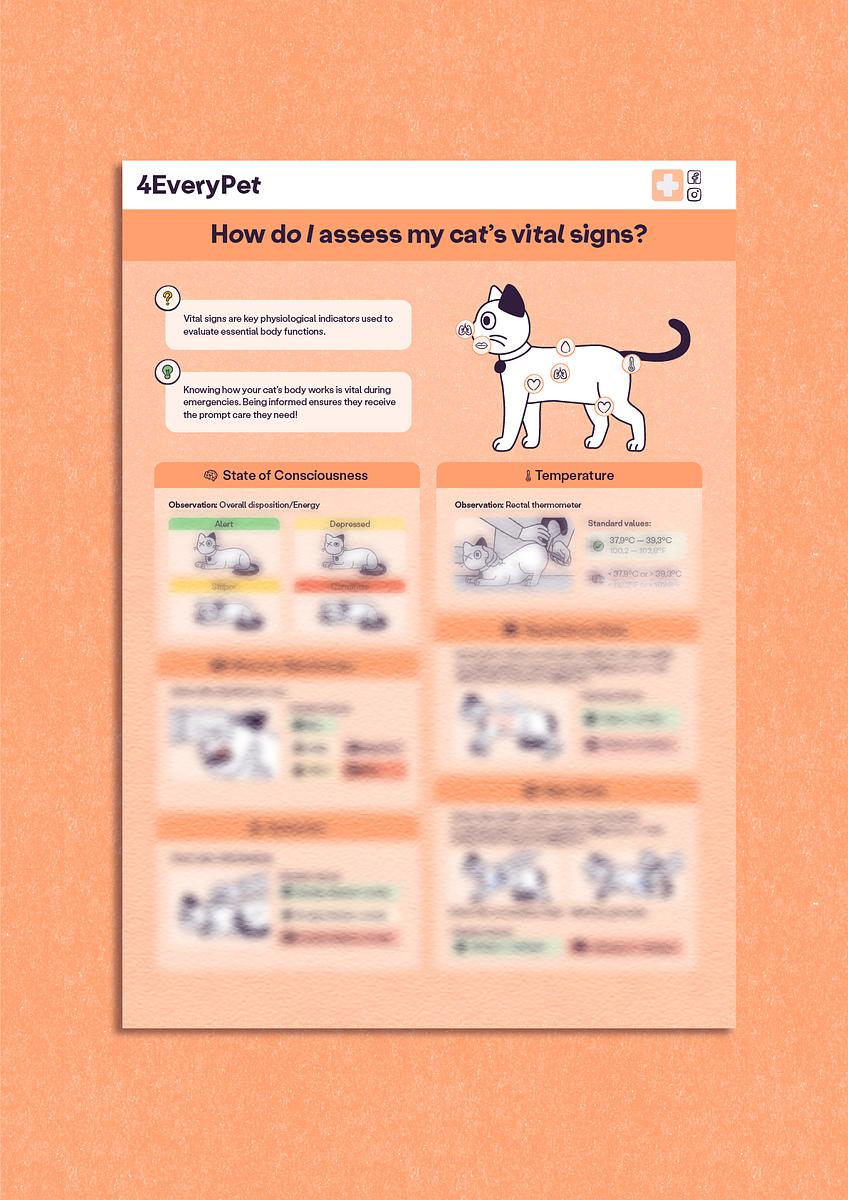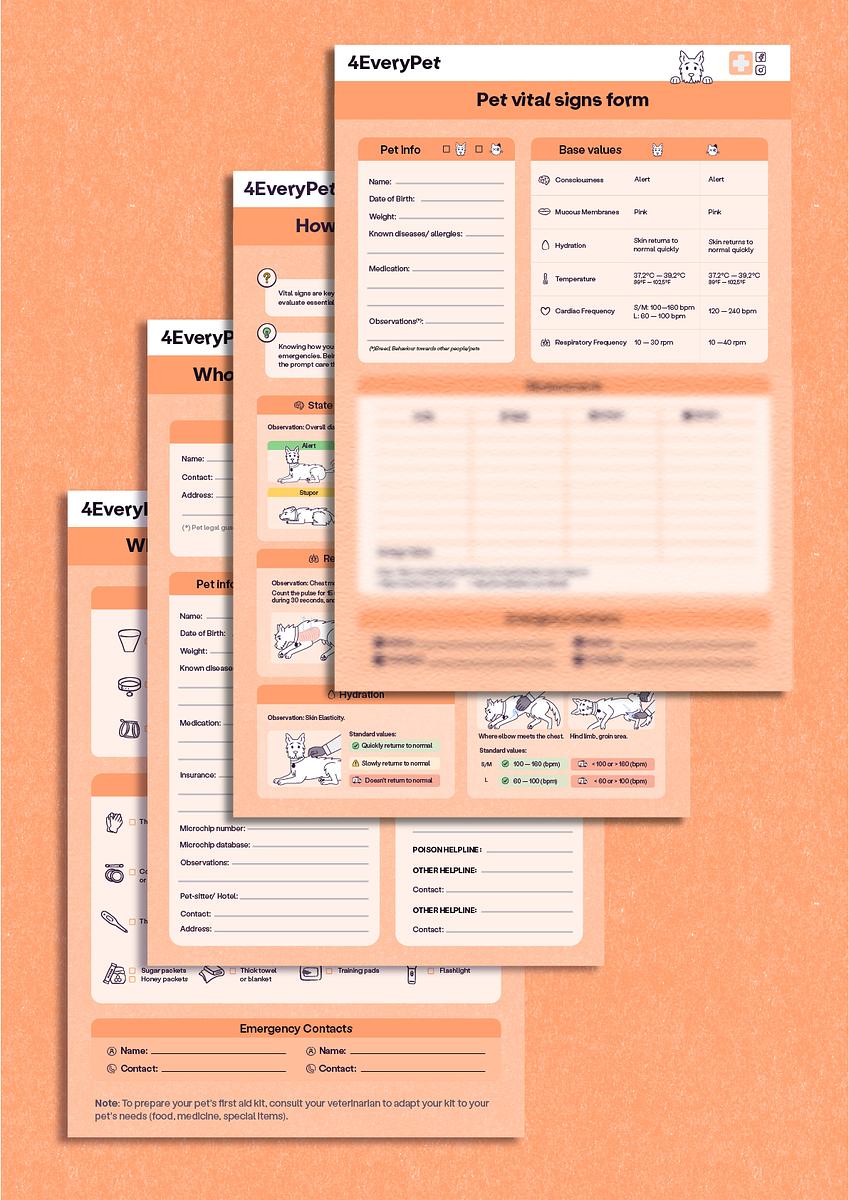When a sudden accident or illness occurs to your pet, the first instinct may be to panic or not know what to do. No matter how difficult the situation may be, it is essential to remain calm and act quickly to assist your pet.
To help with these situations, an easily accessible pet first aid kit can be life-saving. An emergency contact form is also an essential item in your kit, so you don't need to search for help in an emergency.

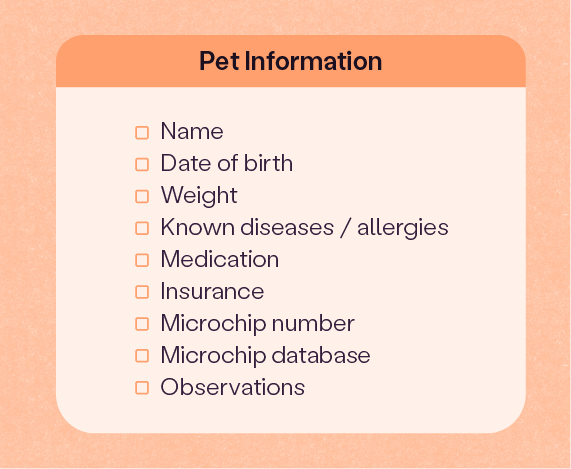
The first information you need in an emergency contact form is your pet’s personal information in case someone else finds them.
Important information includes their age, physical description, known diseases and medication, microchip number and registration, and other information you think is relevant, such as their behavior with other pets or people.
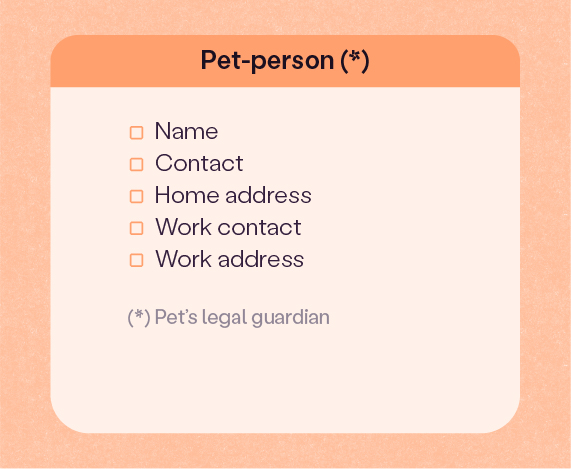
Your personal information (name, contact, and address) is also needed if you are not present when your pet is in an emergency. Your work contact and address can help reach you quickly.
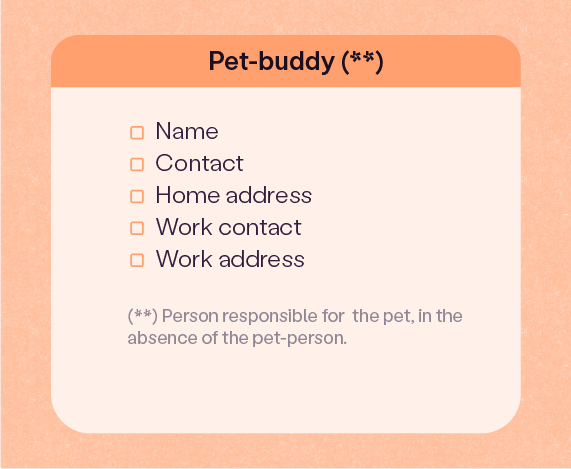
When you are not nearby or reachable, who is the person responsible for your pet? That person, your pet-buddy, can be a friend or family member, someone you trust your pet with. Include their contacts in your emergency contact sheet.
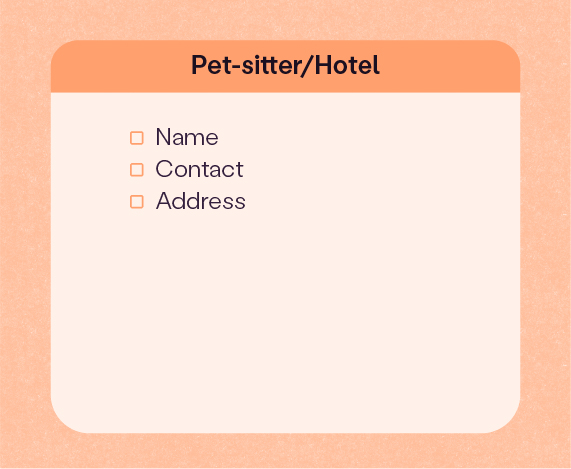
If your pet stays with a pet-sitter or in a pet-hotel when you are on vacation or need help, please include their contact information. Your pet is already familiar with them and may feel more comfortable in their company. If someone else you remember can be of help in an emergency, add their contact to your emergency contact sheet.
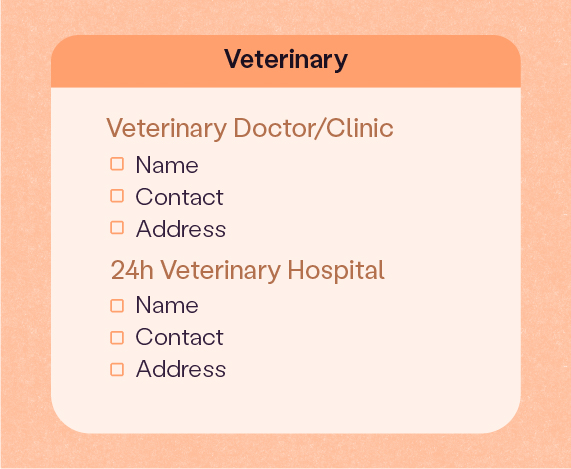
Finally, if your pet needs veterinarian assistance, provide your veterinarian and the nearest 24H veterinary Hospital contacts.
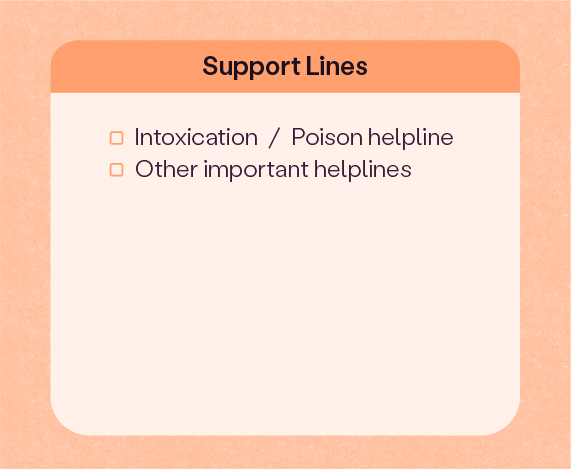
Having the support line contact at hand may help in case of intoxication or poisoning. Look for your local assistance helpline and other helplines that may save your pet’s life in an emergency.
You can also include a photo of your pet and their vital signs form . It can help identify your pet and their normal values in an emergency.
We prepared for you an pet emergency contact form. Check out our other bonus materials as well!

That’s it!
Stay tuned for our next blog post. Thank you for reading!
4EveryPet can only exist thanks to your support. Please share this blog post or buy us a Ko-fi to help keep our content available 4everyone!



